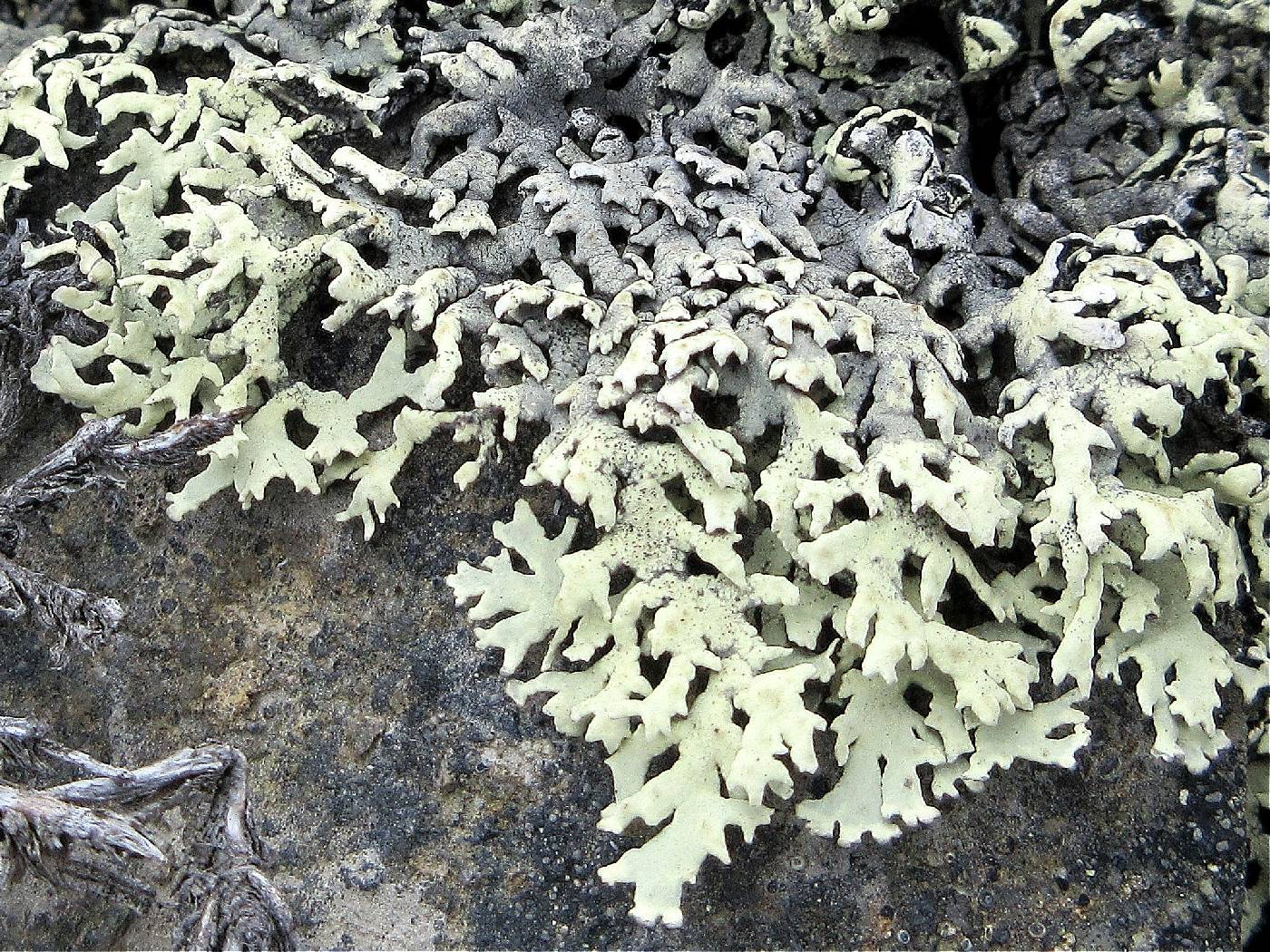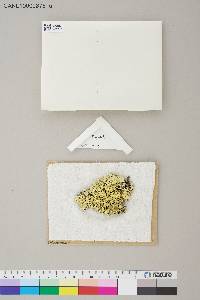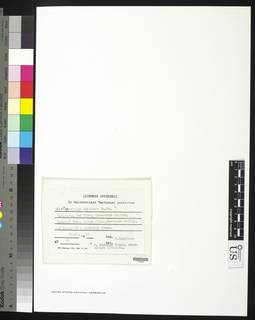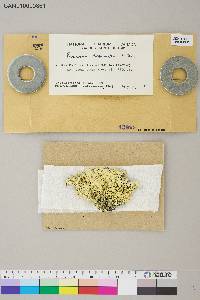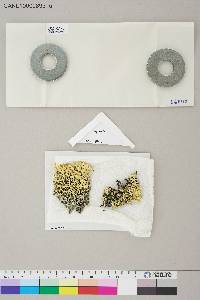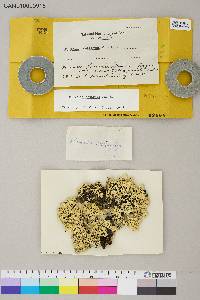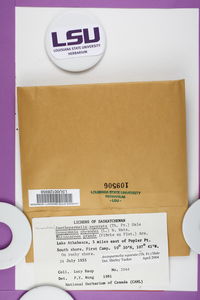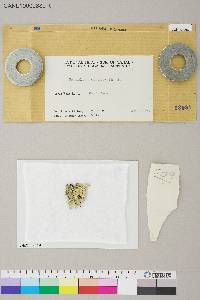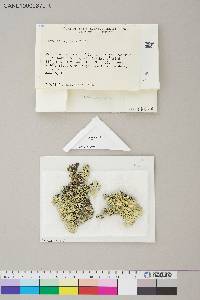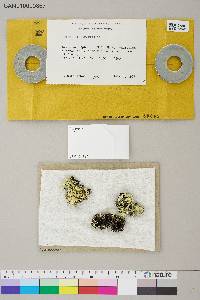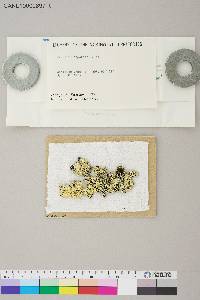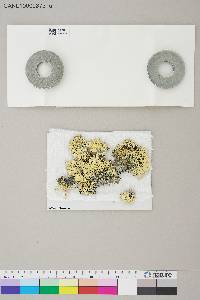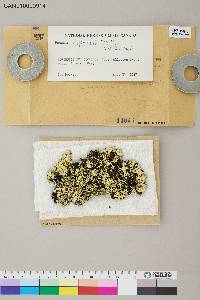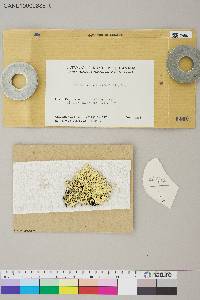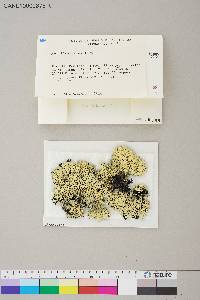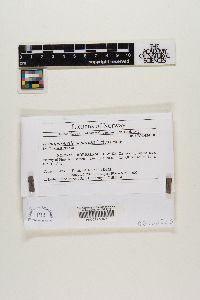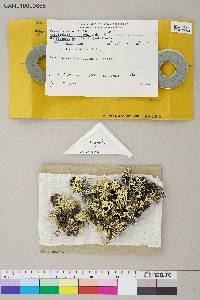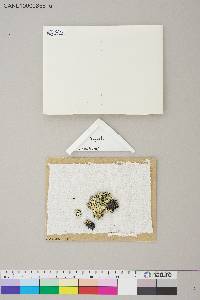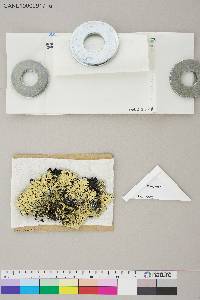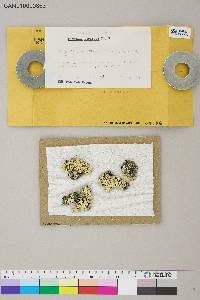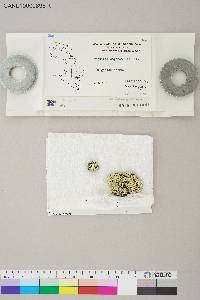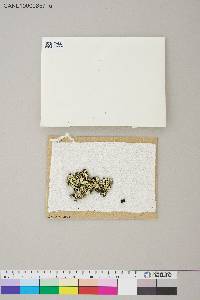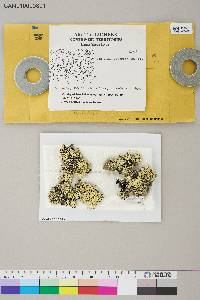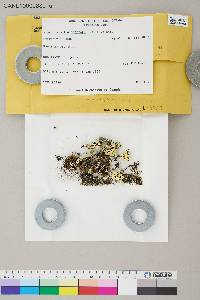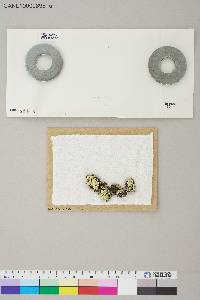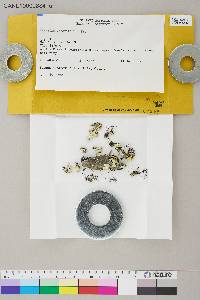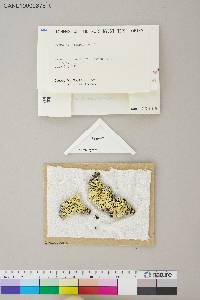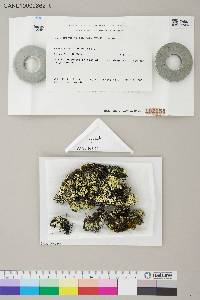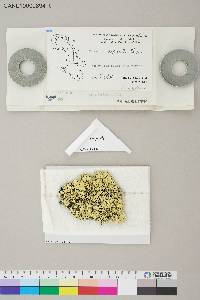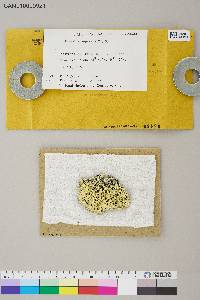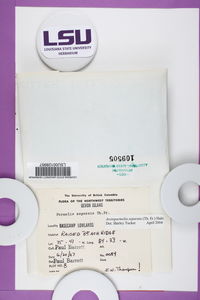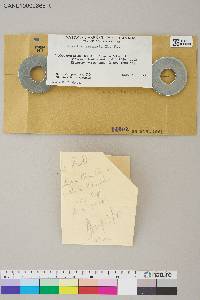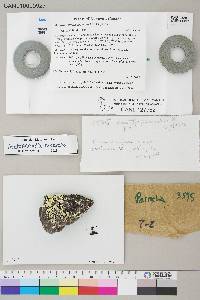
Consortium of Lichen Herbaria
- building a Global Consortium of Bryophytes and Lichens as keystones of cryptobiotic communities -
- Home
- Search
- Images
- Species Checklists
- US States: O-Z >
- US National Parks
- Central America
- South America
- US National Parks
- Southern Subpolar Region
|
|
|
|
Family: Parmeliaceae
[Parmelia birulae var. grumosa Llano, moreParmelia separata Th. Fr., Xanthoparmelia separata (Th. Fr.) Hale] |
Life habit: lichenized (mutualistic with algal photobionts) thallus: foliose (foliaceous), leaf-like thallus: continuous, diffuse, effuse [th] upper surface: green(ish) yellow [th upper surface]: epruinose [th marginal and upper surface] specific structures: absent [th] morphol substructures (eg areoles, lobes, branches) width [mm]: (low) 0.3 (high) 2.0 [th] morphol substructures (eg areoles, lobes, branches) upper surface: smooth, plane | rugose, plicate, folded, pustulate, faveolate, wrinkled [th] lower surface: grey(ish) | red(dish) black [th lower surface] specific structures: present [th lower surface] rhizines, rhizoid structures: present [th lower surface] rhizines, rhizinoid structures: unbranched, simple ascomata: absent | present ascoma: apothecial, apothecioid hymenial ascoma [mm]: (min) 8.0 ascoma: subsessile, subimmersed, adnate, semi-immersed, emergent | sessile, superficial | subpedicellate, substipitate, subpedunculate, substalked [ascm, if apoth] disc, mazaedium: concave [ascm, if apoth] disc, mazaedium: brown(ish) (if pale: fawn, tan; if mid: cinnamon) [ascm] paraphyses/-oids: present asci: lecanoralean [asc] tholus: thickened [asc] tholus amyloidity (iodine reaction): present [asc] tholus amyloidity pattern: amyloid with widening axial body towards the apex (= Lecanora-, Parmelia-, Rinodina-types etc) ascospores: (median) 8.0 [asp] length [µm]: (low) 10.0 (high) 12.5 [asp] width [µm]: (low) 4.5 (high) 6.5 [asp] septa: absent spore lumen unilocular, monolocular [asp] pigmentation: hyaline, colourless [asp] perispore, epispore: not apparent secondary metabolites: present secondary metabolites: α-collatolic acid | alectoronic acid | atranorin | chloroatranorin | usnic acid primary photobiont: present secondary photobionts (eg in cephalodia): absent primary photobiont: chlorophytaceous trebouxiaceous, chlorococcoid. substrate: soil, clay, humus, turf, detritus, dead leaves | bryophytes mosses, liverworts | rock, stones, pebbles unspecified. Thompson, J., 1984. American Arctic Lichens: The Macrolichens. Thallus foliose, loosely attached to the substratum, dichotomously to irregularly branched, the lobes elongate as compared to Xanthoparmelia centrifuga; upper side yellow, brownish in spots, often chinky separated crosswise, smooth to wrinkled; underside mouse gray or dove gray to black, smooth with sparse simple rhizinae, medulla white. Apothecia adnate, slightly pedicillate; margin entire to lobulate, concolorous with the thallus; disk concave, to 8 mm broad, bright chestnut brown, shining, epruinose; cortex of amphithecium poorly differentiated, heavily in-spersed with yellow granules and opaque, the surface rough; epithecium and upper 12 μ of hymenium clear brown; lower part of hymenium hyaline; hymenium 65 μ, I+ blue; hypothecium 90 μ, hyaline to yellowish or grayish yellow, the upper 25 μ 1+ violet, no reaction in the lower part; paraphyses conglutinate, thick-walled, little branched, septate, the tip cells enlarged, brown to 4 μ; asci clavate, 30 x 12 μ; spores 8, hyaline, elongate ellipsoid, simple, 10-12.5x 4.5-6.5 μ. Reactions: cortex K+ yellow; medulla K— , KC+ red, P— , I+ blue. Contents: usnic acid, alectoronic acid, and atranorin. This species grows over mosses, on humus, and on rocks. It is probably circumpolar, arctic, ranging from Novaya Zemlya, across Siberia and northern North America, but has not yet been found in Greenland. |
|
|
|
Powered by Symbiota

